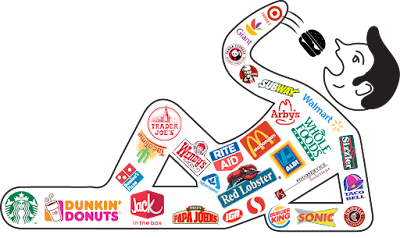How do chain
restaurants make franchisees happy?
Simple drive top line sales and bottom-line profits at the individual
store level. The restaurant business is not brain surgery. It is all about serving customer one meal at
a time, serving Hot Food Hot and Cold Food, Fast, Safely, and with Portability
according to Steven Johnson
Grocerant Guru® at Tacoma, WA based Foodservice Solutions®.
When you are not a niche leader the best
thing to do is follow success clues of others.
That is exactly what Wendy’s did
with its recent launch of French Toast Sticks.
Burger King ‘owned’ the AM fast food French Toast Stick space. They took their eye off the ball, took
consumers for granted, and Wendy’s spotted the weaken marketing messaging at
Burger King. Wendy’s now
anticipates average weekly breakfast sales to reach $2,700 by year's end.
Wendy’s CEO Todd Penegor, stated, on the
recent Q3 call he expects breakfast, introduced in March 2020 as the pandemic
hit, to continue to grow beyond its current $2,700 a week average sales level.
In case you did not know, Wendy’s
breakfast, was rolled out earlier this year to units in Canada, has possible
innovation open in the area of breakfast beverages after the success of copycat product introduction success
it found with Fresh Toast Sticks.
During the all Penegor went on; “We are
incredibly proud of the success of our French Toast Sticks launch,”…. “This
sweet craveable morning treat has quickly become our No. 1 selling breakfast
item. The launch helped us maintain our morning meal dollar share in the QSR
burger category and drove a meaningful acceleration in U.S. breakfast sales
over the course of the quarter with average weekly sales approaching $3000 as
we exited Q3.”
Price matter and the price, value,
service equilibrium for The French Toast Sticks and a $3 croissant promotion
provided confidence that Wendy’s will able
to reach the goal of $3,000 average weekly breakfast sales by year’s end, according
to the team at Foodservice Solutions®.
Marketing matters in the fresh fast-food
space. “We remain committed to our $16
million global investment in breakfast advertising this year just as we remain
committed to fighting for our fair share of the QSR breakfast business,”
Penegor said. That $16 Million is consumer relevant marketing messaging in the
held held food for immediate consumption space according to Johnson.
Adding relevance for consumers was
Wendy’s slow shift into technology. Digital sales momentum held at about 9.5%
of sales domestically and 15% internationally, Penegor added.
“We expect these results to accelerate
even further in the coming quarters as we launched our loyalty program in
Canada just days ago,” he said, adding that delivery typically peaks in the
fourth quarter. Rewards loyalty members increased about 10% in the quarter as
well, he said.
It just may not be as rosy a picture as
you might think as Gunther Plosch, Wendy’s chief financial officer, stated
inflation eased slightly in the third quarter, falling to about 15% in the
period from 19% in the second quarter. For the year, Plosch said, “We are
guiding 15% to 16% on commodities and about 8% to 9% on labor.” Traffic was
“slightly negative” in the third quarter and price increases were between 9%
and 10%.
Don’t over reach. Are
you ready for some fresh ideations? Do your food marketing ideations look more
like yesterday than tomorrow? Interested in learning how Foodservice Solutions® can edify your
retail food brand while creating a platform for consumer convenient
meal participation, differentiation and individualization? Email us at: Steve@FoodserviceSolutions.us or visit us on our social media sites by clicking the
following links: Facebook, LinkedIn, or Twitter




























